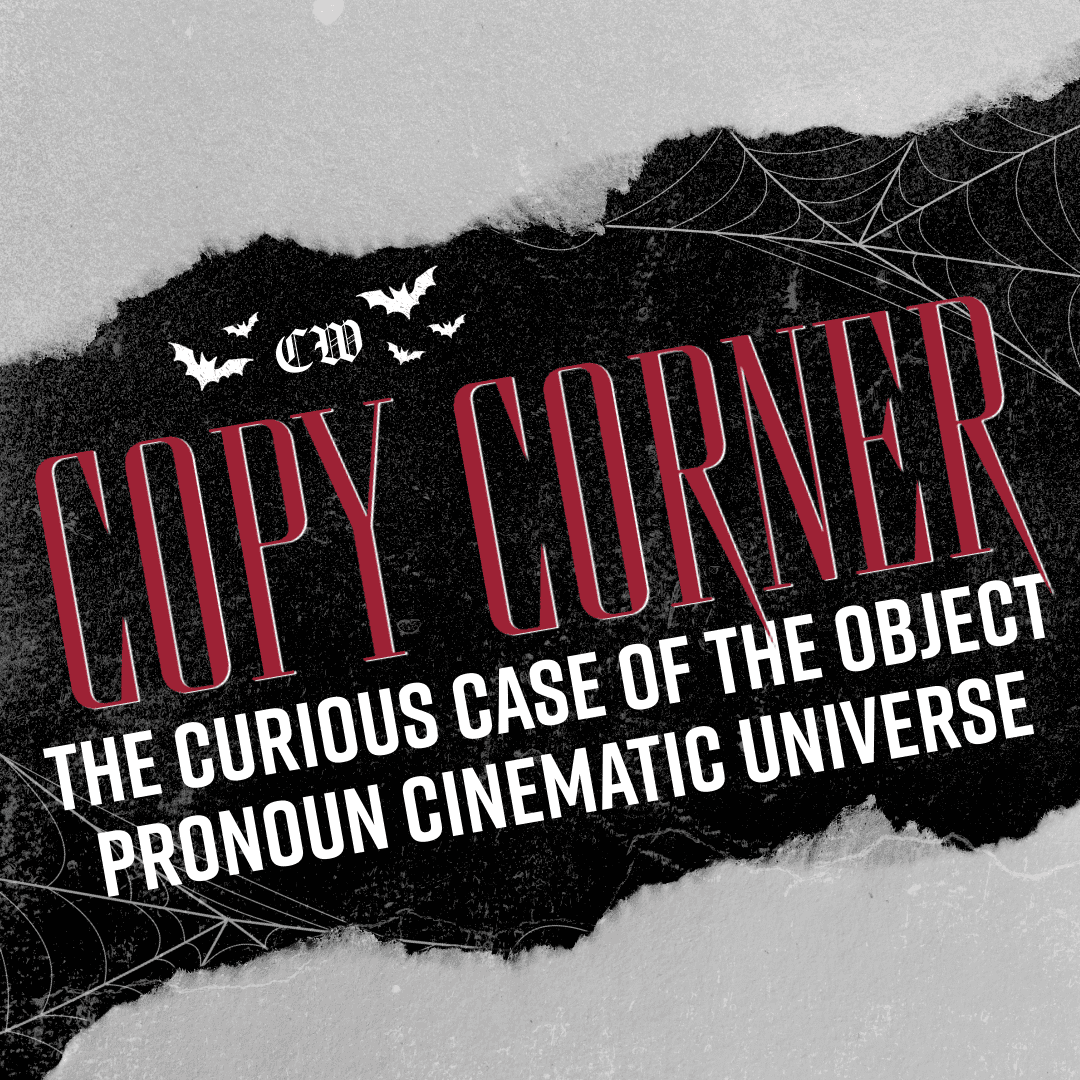In a Hollywood landscape increasingly shaped by the formula of sprawling interconnected franchises, countless movie genres have spawned series with ambitions of being the next great cinematic universe.
For horror — which, in the beloved Halloween season, is the genre in vogue — the most prominent example of this formula is “The Conjuring Universe,” a franchise currently with nine entries spanning across several decades and covering a wide range of characters, whether a possessed doll, the ghost of a witch or an umbrella-wielding “Crooked Man.”
Beyond “The Conjuring” or any other organized horror universe, however, there exists a universe connected not by narrative, nor by character or even setting, but rather by the foundation of its titles: object pronouns.
The idea of linking movies by their use of pronouns, which are naturally short and somewhat vague, can be traced to a linguistically observant Tumblr post, but that wasn’t dedicated to horror, and it missed out on a variety of examples that movie fans would likely consider fitting inclusions, if not outright staples of the horror genre.
The post also didn’t limit its selections to object pronouns, which, while opening it up to a larger range of films, is less efficient in terms of language. Object pronouns, as we will see in several avenues of linguistics and psychology, are a potentially genius category of title for both allure and scariness.
Before discussing the reasons, we must first observe the entries in this unofficial universe. Most recognizable among object pronoun horror films is “It,” a 2017 adaptation of Stephen King’s magnum opus novel and a reboot of the previous 1990 rendition. The title comes from the story itself, referring to the indescribable horror of the iconic monster “Pennywise” that goes beyond gendered or adjectival description.
Other recent examples include “Us,” a 2019 doppelganger horror movie from directory Jordan Peele, and “You,” a stalker horror show on Netflix with its final season set to release later this year. Peele is also producing a movie titled “Him” set to release in 2025; it will follow a legendary quarterback and his trainee, and it’s described as “a blood-chilling journey into the inner sanctum of fame, power and the pursuit of excellence at any cost.”
There are two horror films for the object pronoun “them,” one a 2006 French-Romanian outing and the other a 1954 monster movie. As for “her” and “me,” there are movies that claim those terms as titles, but they are not horror, instead falling somewhere between sci-fi romance and absurdist comedy.
The lingering question after such a silly and frivolous collection of otherwise-unconnected movies is simply — why? What could be the reason behind composing a movie title around a singular object pronoun?
One potential avenue is title length efficiency. This is an idea that has been tossed around before, with IndieWire in one article discussing Peele’s single-word titles and saying Peele “isn’t the first horror auteur to make their monosyllabic mark with a title that’s doggedly vexing and slyly sinister.” Outside of horror, Mark Lee of Overthinking It did a statistical analysis of title length as it relates to box office success; unfortunately for the efficiency idea, he found that there was a “horribly weak positive correlation.”
Another possibility is heavily related to a cornerstone horror movie technique: spatial psychology. Directors often utilize shot composition with large amounts of open space surrounding a character in order to add an edge of frightening possibility. NoFilmSchool wrote that this open space is “often equated to vulnerability,” using the strategy of “[removing] anything that your character could use to protect themselves.” From a more purely psychological angle, an article from Long Island University says, “Our brains begin to imagine the full, clear image without the shadows and imagine those darker places to conceal horrific things.”
This technique is perhaps being extrapolated to the title of the film itself, especially as it exists on a movie poster. Posters like those of “It’’ or “Us” feature loads of dark space, making a sinister surrounding for the small title and sparse character/scenage.
It’s also feasible that object pronouns are being used simply for vagueness in reference. There’s a certain completeness to these pronouns, just based off their lexical nature; if we want to refer to a person or people, we can say, “You, him, her, them,” and if we want to refer to something indiscernible or mysterious — like with Pennywise the Clown — we can say, “It.” These are grammatically functional phrases, but they’re ominously short and reveal only a smidge of information to draw the audience in.
The reality is that there’s likely no strategy intentionally centered around these pronouns from a linguistic perspective. That inherent lexical nature is as described — inherent — and thus these titles likely come from an intangible and undefinable sense of creepiness.
Stephen King likely didn’t have grammatical categories in mind when he termed his monster “It,” nor did Jordan Peele with “Us” or others with titles like “Them.” These creators probably just felt the frightening aura of such singular and tantalizing words as headliners for their horrific tales.
For us at Alabama and for our Southern film-loving brethren, all we need now is a Halloween flick titled “Y’all.”
The Crimson White Copy Desk consists of Chief Copy Editor Luke McClinton and Assistant Copy Editors Lauren Chumbley and Rachel Talley.









